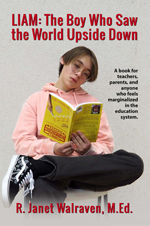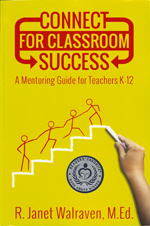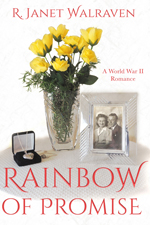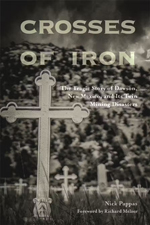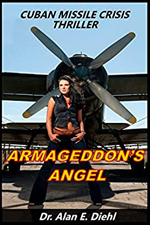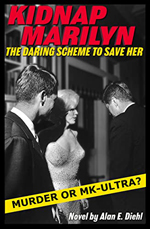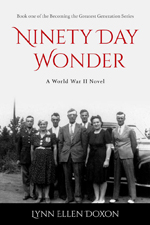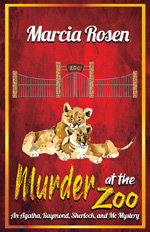Artist and historian T. E. MacArthur is the award-winning author of two steampunk series — The Volcano Lady and The Gaslight Adventures of Tom Turner — as well as A Place of Fog and Murder, a dieselpunk/noir-punk Lou Tanner P.I. Mystery. The Skin Thief (Indies United Publishing House, March 2023) is Thena’s newest release and her first paranormal romance thriller. You’ll find Thena on her website at TEMacArthur.com, on Facebook, and her Amazon author page.
 What would you like readers to know about the story you tell in The Skin Thief?
What would you like readers to know about the story you tell in The Skin Thief?
Agent Tessa Lancing believed she knew all about death — until she met Death itself. Tessa has one last chance to prove herself to her employer, a disavowed secretive agency, or face literal termination, and she’s desperate to do what she must to succeed. When assigned to a doomed mission already littered with dead bodies, she drags Jack de Sombras, an accused traitor who’s also her old partner and unrequited love, out of his self-made tomb and back into the field. By teaming up with Jack, she expects to make quick work of the situation. She’s wrong…With an ancient evil and Death itself after them, can they survive their last mission together?
What was the inspiration for the book?
The Skin Thief started as my Pandemic project. I mean, what the heck: stay at home, nothing to drag me out of the house, nothing to distract me or to take up time. Of course, I can write 100 books, am I right? I was wrong. That time of isolation drained me of all my energies, most assuredly, my creative energy. I was not alone. Still, more than a little determination got the plotting, false-starts, and research going. I also discovered the pure joy of Zoom workshops and meetings. I could go on about that, but I’m trying not to get too far off topic.
The book began as my homage to the British Avengers TV show (and was also inspired by the X-Files, with a heaping spoonful of both Tony Hillerman and Dean Koontz). In fact, my two protagonists call each other Steed and Peel once in a while. I tried to get that humor and weirdness, yet it wasn’t quite working. At that point, I backed up and asked, “What do you do (better) with two great new characters? Where do you want them to go? What kind of antagonist is the right match?” Why yes! That led to a complete re-write.
Did you know from the beginning that you wanted The Skin Thief to be a paranormal romance thriller?
Not even close. I ran the first iteration of The Skin Thief past a potential, and very time-generous agent who called it a Romantic Suspense. I knew there were some romantic elements but putting that in the genre label surprised me. Once I did a whole re-write, I embraced the romantic while not making it the center of the plot. “Will they” or “won’t they” is meant to enhance the thrill, not to overwhelm or distract from it.
Were there any challenges you faced when wrapping all those elements together?
My biggest concern was to make sure that I’d written a solid paranormal thriller, then to see to it that any romantic parts fit and moved the story smartly, and last (although not at all least) I needed to make sure that the facts flowed.
I could point to the biggest challenge being the fact that I hadn’t been in the Four Corners area (where The Skin Thief is set) in such a long time. I didn’t want to do the area or the people there an injustice by getting the details wrong or suggesting that the whole place was a paranormal cesspool. People of many ancestries have lived there over thousands of years. There are still so many mysteries about the ancient populations to modern observers. I didn’t want to do a disservice to any of the above.
My “ancient evil” is one of those evils that always seems to pop up everywhere. You spray, and you spray, and they just keep coming back.
Who are your main characters, and why will readers connect with them?
Who doesn’t love a cowboy? I suppose it depends on the man, doesn’t it? If he’s a cowboy with dangerous secrets and a questionable past, I suppose Jack de Sombras might not be your cup of tea. Then again, he is terribly smart, brave, and charming, even if you don’t know what his motivations are.
Tessa Wells Lancing has PTSD. She’s a bright bulb with a kick-ass attitude. If it can be done, Tessa either will do it or give it nothing less than her best. Can she help it if she wisely got therapy and the doctor put her on the path of parapsychology? Was it her fault if Death took a liking to her?
Two imperfect intelligence agents, working together again, to save lives. What’s not to like?
Do you share traits with any of your characters? Or are any of your characters based on people you know?
Every author writes him or herself into their characters. I think in this case, my characters have my sense of humor and Tessa has my interest in the paranormal but otherwise they are whole and completely their own people.
 You’ve written in many genres: Mystery, Paranormal, Science Fiction, Thriller, Steampunk, to name a few. Do you prefer one genre over another?
You’ve written in many genres: Mystery, Paranormal, Science Fiction, Thriller, Steampunk, to name a few. Do you prefer one genre over another?
While we’re focused on the The Skin Thief for this interview, I’m also working on my second series, the Lou Tanner Mysteries — set in 1935 futuristic San Francisco. I’m flopping back and forth between two very different styles, yet all in a similar genre. Thrillers.
Thrillers make me happy. While I like a good whodunit, I like the chase even more than the solution. And I love a good ghost story. I’d say right now, I’m split between writing paranormal and writing futuristic pulp detectives.
What I mean by futuristic pulp is called Dieselpunk. Like Steampunk (Victorian Science Fiction, ala Jules Verne), Dieselpunk takes history from between the world wars and asks, “What if?” In my case, I ask, “What if in 1935, technology includes robots and automated taxis to go along with a female, Raymond Chandler-like detective?” I adore the slang, the innuendo, the Art Deco/Noir setting, Jazz Age life. Chandler has a certain phrasing that is classic and profoundly descriptive.
Why did you choose your particular settings for The Skin Thief?
When I was eight years old, my family moved to Colorado Springs. I wasn’t what one might call “popular.” Okay, I was the odd kid, the weirdo, the California girl. I got bullied very badly. I found solace in being alone and using my imagination. I would sit in my backyard, with its view of Pikes Peak and Cheyenne Mountain, and look at the strange light in between them called the Shrine to the Sun. Every night, there it was, waiting in the darkness that was granite and conifer. Far away, enough that we never visited, but close enough that a neighbor or two mentioned it. It was a few years before I learned it was the Will Rogers Shrine to the Sun, a tribute to his writing.
Meanwhile, there I sat, imagining what a Sun Shrine might be like, filling in with jungle-covered Aztec ruins or lost ancient Egyptian travelers. Things an eight- or nine-year-old thinks. We had cliff dwellings too, although those weren’t quite like Mesa Verde. I wanted nothing more than to find ancient peoples as if finding myself within them. To me, they were unknowable — as was I.
My sneaky way home, that avoided where the bullies waited for me, went through a grove of trees where I would imagine great escapes, powerful witches, and talking trees. I suppose in a way, I can appreciate that the bullies forced me on an imaginative path — although I’m loathe to give them any credit.
Can you share with readers what writing project you’re working on now?
A new, re-edited second edition of A Place of Fog and Murder: A Lou Tanner Mystery will be released on October 25th by Indies United Publishing House LLC. Like The Skin Thief, it will be available on all the basic and familiar places. For now, I’m working on sequels to both The Skin Thief and A Place of Fog and Murder. Whichever tickles my fancy each day gets my attention. Both are due in 2024.
Where can readers find your books?
I am on Amazon, Kindle, Barnes & Noble, Draft2Digital, and Smashwords. Go to Books2Read for links to all retailers.
Anything else you’d like readers to know?
After visiting Albuquerque in 2022 for the Left Coast Crime convention, not to mention a side trip to Santa Fe, I fell in love with the Southwest again. I also met the SouthWest Writers group and am so glad I joined.
 Su Lierz writes dark fiction, short story fiction, and personal essays. Her short story “Twelve Days in April,” written under the pen name Laney Payne, appeared in the 2018 SouthWest Writers Sage Anthology. Su was a finalist in the 2017 and 2018 Albuquerque Museum Authors Festival Writing Contest. She lives in Corrales, New Mexico, with her husband Dennis.
Su Lierz writes dark fiction, short story fiction, and personal essays. Her short story “Twelve Days in April,” written under the pen name Laney Payne, appeared in the 2018 SouthWest Writers Sage Anthology. Su was a finalist in the 2017 and 2018 Albuquerque Museum Authors Festival Writing Contest. She lives in Corrales, New Mexico, with her husband Dennis.

